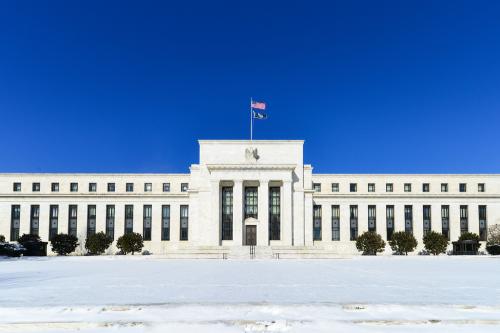Regulators and academics have warned repeatedly that open-end bond mutual funds pose a significant risk to financial stability. If at a time of financial stress, lots of mutual fund shareholders pull their money out at the same time, the funds may be forced to sell bonds in their portfolios at fire sale prices. This can push down prices of other bonds, thus raising yields, and boost borrowing costs across the economy. In March 2020, for example, at the onset of the COVID-19 pandemic, investors took a record $45 billion from municipal bond funds, prompting the Federal Reserve to intervene to make loans backed by muni bonds and to offer to lend directly to state and local governments.
To reduce the risk of a repeat, the Securities and Exchange Commission has proposed, among other things, requiring open-end funds to keep at least 10% of their portfolio in highly liquid assets, such as short-term Treasury bills, so that they can satisfy a flood of shareholder redemptions without selling much less liquid municipal or corporate bonds. In a paper presented at the Municipal Finance Conference at Brookings in July 2024, economists Sergey Chernenko of Purdue University and Viet-Dung Doan of Hong Kong Baptist University find that—assuming the historical relationship between outflows from mutual funds and their sale of assets—such a requirement would have “a limited effect” on mutual funds sales of bonds from their portfolio when investors pull out large sums.
Chernenko and Doan construct a novel data set with daily trading, inflows and outflows, and cash buffers of municipal bond mutual funds. The funds did sell bonds from their portfolios when investors pulled money out. They estimate that $1 of outflows from a fund is associated with 24.2 cents of bond sales initially and another 26.9 cents worth of bonds in the following 15 trading days. The remaining outflows, they assume, are met by the funds’ cash reserves. Larger funds tend to sell less in response to outflows, as do funds holding longer maturity bonds.
The authors use pre-COVID data to estimate the behavior of the funds and then estimate how differently funds would have behaved between March 9 and April 30, 2020, if they had held 10% of their assets in a cash buffer. Specifically, a 10% liquid assets buffer would have reduced cumulative aggregate sales by municipal bond mutual funds in the early stages of the pandemic by only about 18%. “Requiring cash buffers on the order of 10% is unlikely to have a significant effect on flow-induced sales during periods of market stress,” they conclude.
Chernenko cautions, though, that funds might behave differently if all were required to have a 10% cash buffer. Absent such a policy, consider a fund that has a large cash buffer and knows that other funds do not. That fund might be reluctant to draw down the buffer instead of selling assets today to meet redemptions. It might worry that there will be outflows tomorrow and that, because other funds have little cash, they will have to be selling assets. If the fund draws down its cash and delays selling assets today and then faces outflows the day after tomorrow, it may have to sell assets at really low prices because of massive selling by other funds. However, if all funds were required to have a 10% cash buffer, then all of them might be comfortable in drawing down their cash buffers instead of selling assets, knowing that other funds won’t be forced to sell assets at fire sale prices.
Still, in responding to questions at the conference, Chernenko said regulators should consider ways other than requiring the 10% cash buffer to shield the financial system from the turmoil caused when shareholders pull lots of money out of the open-end funds.
-
Acknowledgements and disclosures
The Brookings Institution is financed through the support of a diverse array of foundations, corporations, governments, individuals, as well as an endowment. A list of donors can be found in our annual reports published online here. The findings, interpretations, and conclusions in this report are solely those of its author(s) and are not influenced by any donation.





